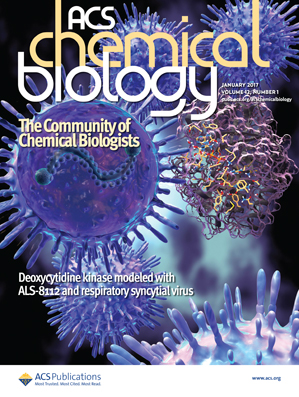LI-RADS category can be a post-surgical prognostic factor for intrahepatic cholangiocarcinoma in patients with liver cirrhosis or chronic hepatitis B
IF 3.8
2区 生物学
Q2 BIOCHEMISTRY & MOLECULAR BIOLOGY
引用次数: 0
Abstract
Introduction The Liver Imaging Reporting and Data System (LI-RADS) categorization has been proposed as a potential prognostic indicator for primary liver neoplasms in patients with liver cirrhosis or chronic hepatitis B. This multicenter study aimed to determine whether LI-RADS categorization can offer additional post-surgical prognostic value for intrahepatic cholangiocarcinoma (ICCA) when used in conjunction with the American Joint Committee on Cancer (AJCC) guidelines. Methods Patients with high risk for hepatocellular carcinoma, surgically confirmed ICCAs, and available preoperative MRI were enrolled. LI-RADS categorization of ICCAs was performed using MRI features, and multivariate analyses were conducted incorporating LI-RADS category, AJCC staging, and clinicopathologic factors to evaluate their predictive value for postoperative recurrence-free survival (RFS) and overall survival (OS). In patients with early recurrence (<2-years), the percentages of AJCC stage I and LR-M or LR tumor-in-vein (TIV) were calculated, respectively. Results Among the 166 ICCAs analyzed, 13.3% (22/166) were classified as LR-4/5, 77.7% (129/166) as LR-M, and 9.0% (15/166) as LR TIV. Classifications according to the 8th AJCC guidelines for patients with available post-surgical pathologic data and follow-up imaging were 40.6% (63/155) stage I tumors, 23.9% (37/155) stage II, and 35.5% (55/155) stage III. Multivariate analysis revealed that LI-RADS category (LR-M or LR-TIV) was a significant factor for predicting both RFS (hazard ratio [HR]=2.86, p=.02) and OS (HR=3.18, p=.03). Additionally, AJCC staging (II or III) was a significant factor for RFS (HR=3.90, p<.001) and OS (HR=3.29, p<.001), male sex was a significant factor for RFS (HR=1.89, p=.006) and OS (HR=2.23, p=.002), and positive resection margin was a significant factor for OS (HR=1.91, p=.03). Among the 80 patients with early recurrence, 97.5% displayed LR-M or LR-TIV features, while 11.3% were AJCC stage I patients. Conclusion The MRI-based preoperative LI-RADS categorization of ICCA provides additional post-surgical prognostic value beyond the AJCC guidelines, with significant implications for both RFS and OS.LI-RADS 类别可作为肝硬化或慢性乙型肝炎患者肝内胆管癌手术后的预后因素
导言:肝脏成像报告和数据系统(LI-RADS)分类已被提出作为肝硬化或慢性乙型肝炎患者原发性肝肿瘤的潜在预后指标。这项多中心研究旨在确定当与美国癌症联合委员会(AJCC)指南结合使用时,LI-RADS分类是否能为肝内胆管癌(ICCA)提供额外的术后预后价值。方法 选取肝细胞癌高风险、经手术确诊为 ICCA 且可进行术前 MRI 检查的患者作为研究对象。利用磁共振成像特征对ICCA进行LI-RADS分类,并结合LI-RADS分类、AJCC分期和临床病理因素进行多变量分析,以评估它们对术后无复发生存期(RFS)和总生存期(OS)的预测价值。结果 在分析的 166 例 ICCA 中,13.3%(22/166)被归类为 LR-4/5,77.7%(129/166)被归类为 LR-M,9.0%(15/166)被归类为 LR TIV。根据第 8 版 AJCC 指南,有术后病理数据和随访影像学资料的患者的肿瘤分期为:40.6%(63/155)为 I 期,23.9%(37/155)为 II 期,35.5%(55/155)为 III 期。多变量分析显示,LI-RADS分类(LR-M或LR-TIV)是预测RFS(危险比[HR]=2.86,P=.02)和OS(HR=3.18,P=.03)的重要因素。此外,AJCC分期(II或III)是预测RFS(HR=3.90,p<.001)和OS(HR=3.29,p<.001)的重要因素,男性是预测RFS(HR=1.89,p=.006)和OS(HR=2.23,p=.002)的重要因素,切除边缘阳性是预测OS(HR=1.91,p=.03)的重要因素。在80例早期复发患者中,97.5%具有LR-M或LR-TIV特征,11.3%为AJCC I期患者。
本文章由计算机程序翻译,如有差异,请以英文原文为准。
求助全文
约1分钟内获得全文
求助全文
来源期刊

ACS Chemical Biology
生物-生化与分子生物学
CiteScore
7.50
自引率
5.00%
发文量
353
审稿时长
3.3 months
期刊介绍:
ACS Chemical Biology provides an international forum for the rapid communication of research that broadly embraces the interface between chemistry and biology.
The journal also serves as a forum to facilitate the communication between biologists and chemists that will translate into new research opportunities and discoveries. Results will be published in which molecular reasoning has been used to probe questions through in vitro investigations, cell biological methods, or organismic studies.
We welcome mechanistic studies on proteins, nucleic acids, sugars, lipids, and nonbiological polymers. The journal serves a large scientific community, exploring cellular function from both chemical and biological perspectives. It is understood that submitted work is based upon original results and has not been published previously.
 求助内容:
求助内容: 应助结果提醒方式:
应助结果提醒方式:


